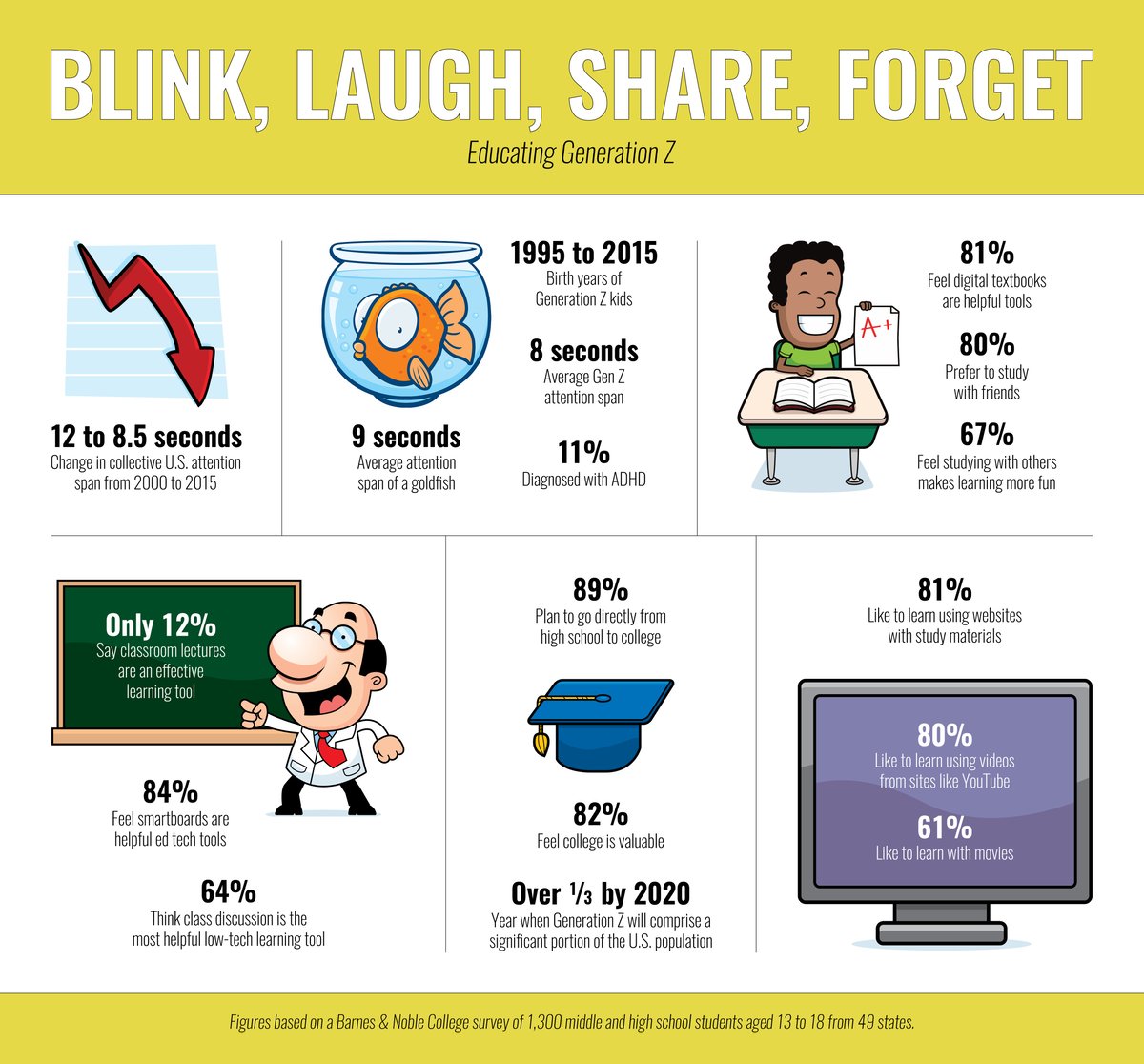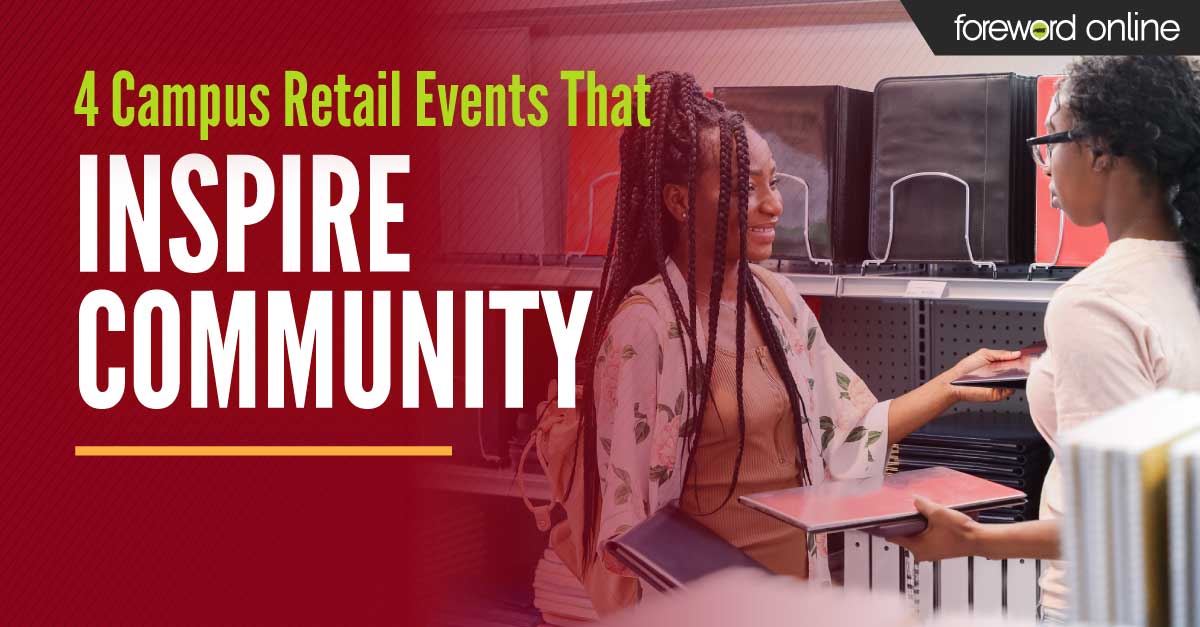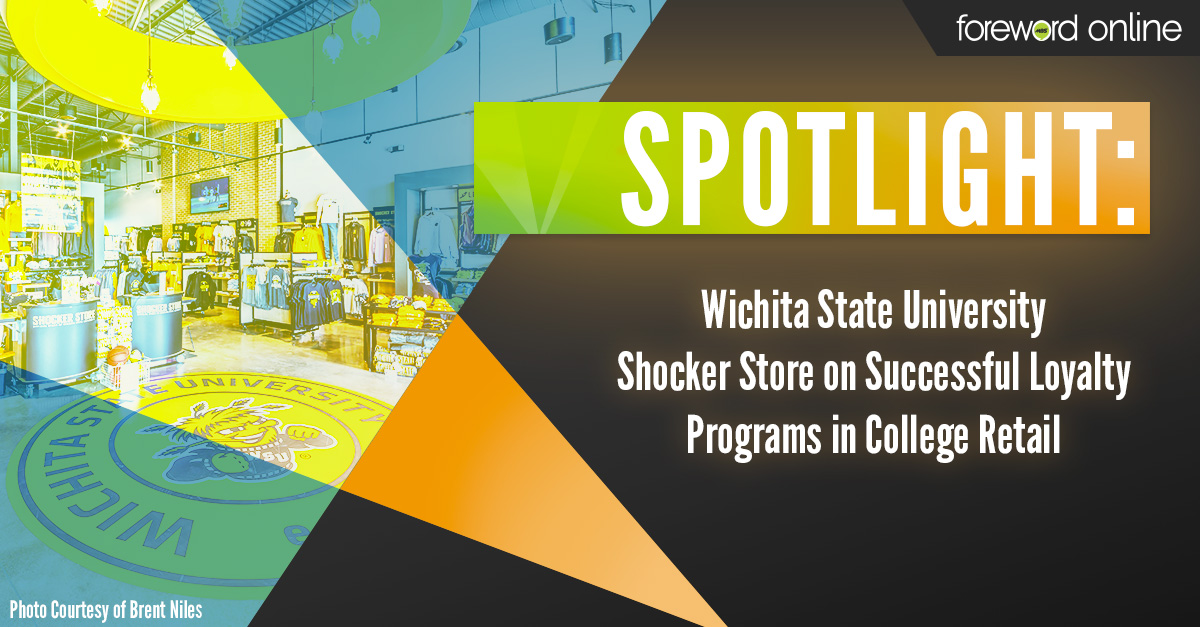Gen Z kids have a notoriously short attention span of eight seconds. 11% are diagnosed ADHD.
Blink, laugh, share, forget.
SnapChat, Gen Z’s preferred social media platform, is an excellent example of this experience. An image flashes onto a mobile screen. Maybe it’s adorned with a goofy filter — whiskers and ears — or inscribed with a silly caption (Hoppy to see you!). It lingers onscreen 10 seconds, then dissolves. Poof. Gone. By then, most users have already created an image of their own, uploaded, replied and searched YouTube™ for a new video. After all, 10 seconds, is, like, forever.
Blink, laugh, share, forget.
How do college educators and retailers speak to this? Student distractability frustrates faculty. Many teachers say they feel like they’re at constant war with the devices students regard as indespensible. Little wonder that the price on a textbook — with its miles of sleep-inducing print — can strike some students as absurd.
Some experts say the problem isn’t the students, the rise of ADHD or a lack of discipline.
Our educational paradigm is out of touch. Beeps, flashes, high-speed videos — and bunny ears — constantly compete for student attention. In this a hyper-stimulating age, how can we expect them to pay attention to the boring stuff we teach in school?
Here’s some advice:
Blink — Let images do the talking in your marketing. And keep college stores, classrooms and even course materials wired. Gen Zers are the force behind the rise of the emoticon. This is a visual generation.
- 84% rank smartboards as helpful ed tech tools in a Barnes & Noble College survey of 1,300 middle and high school students in 49 states.
- 81% rank digital textbooks helpful learning tools, and an equal number say they like websites with study materials.
- 80% like to use online videos from YouTube or similar sites for learning, but only 61% like a DVD or a movie.
- A two-hour film is too long.
Laugh — Don’t throw stones and don’t take yourself too seriously. We’re all afflicted with shrinking attention spans, according to a 2015 Microsoft Corp. report.
- Our collective attention span dropped from 12 seconds to eight seconds between 2000 and 2015 — just as the iPhone™ and Android™ came to dominate our lives.
- Our attention span is one second shorter than that of a goldfish.
- Gen Zers can’t remember a time when things were otherwise. They neither lament the loss of concentration, nor find it crippling.
- Students can get a lot more done in eight seconds than educators. They’re superb multitaskers, easily working off five screens simultaneously – from phones, to tablets, to wearables. Your mobile marketing drives are likely to have a lot of power with them
Share — Bring students together for store events. Make ample use of social media. Millennials are known for narcissism; Gen Zers have a collaborative outlook. It’s the “we generation,” not the “me” generation. Students prefer to study together in person and via Skype, according to the Barnes & Noble College survey.
- 80% say they prefer studying with friends.
- 67% say studying with others makes learning more fun.
- 64% say class discussion is the most helpful low-tech learning tool.
- Only 12% rank classroom lectures an effective learning tool.
Keep students talking in get-togethers — in classes or informal gatherings — and allow them to change the subject. It doesn’t hurt to go “off-topic” as long as you find a way to bring them back to the original focus now and then.
Forget — For all those tied to college campuses, that’s the rub. Given the onslaught of information tugging at a Gen Zers attention, it’s healthy for students to filter things out, but how do educators teach students what to remember and what to forget? Learning and remembering are inseparable. This problem isn’t going away.
- 82% of students surveyed say they plan to go directly from high school to college.
- A full 89% rate college as valuable.
At least Gen Z hasn’t forgotten the importance of education.







